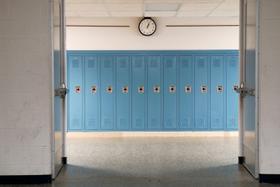Local schools and charter schools have historically clashed in many school districts. Local schools have complained that charters take away district funds and promote competition that has no place in the public school system. On the other hand, charter schools counter the fact that they typically receive less funding than other local schools, even though they are also considered public schools.
The District-Charter Collaboration Compact
The Bill and Melinda Gates Foundation is addressing this conflict directly at its source by providing financial incentives for charter and local schools to work together for the benefit of the students they serve. The District-Charter Collaboration Compact was designed by the foundation to encourage these two groups to find new and creative ways to work together to raise the bar on the standard of education in their communities. Schools that prove they can work well together will be rewarded with grants from the foundation that will go to providing access to consultants and advisors that will help them improve the quality of education across the board.
Vicki L. Phillips, director of education, College Ready, at the Bill and Melinda Gates Foundation, said in a press release on the , "Traditional public schools and public charter schools share a common goal of preparing all students for future success. Too often, issues not tied to academic outcomes can make it difficult for schools and teachers to have the opportunity to learn from each other and build upon successful practices, whether those practices are found in district-run or charter-run schools. We hope this compact helps to fill a void for these cities and will lead the way for a committed partnership to work together to improve all schools."
Cities that Have Signed the Compact
A number of cities have already agreed to sign on for the compact, including Baltimore, Denver, Hartford, Connecticut, Los Angeles, Minneapolis, Nashville, New Orleans, New York City, and Rochester. According to a report in the , these nine cities enroll about 30% of all students in urban settings. In addition to the $100,000 grants received for signing the compact, these cities will also compete for six larger grants of undisclosed amounts.
The amount of cooperation that can be achieved in these cities will vary greatly based on how much animosity was brewing between local schools and charters before the compact was signed. For example, Los Angeles and Rochester are two areas where there has been significant conflict between the two types of schools. These cities must begin by building trust between schools before they can even think about implementing cooperation and the exchange of ideas.
On the other hand, Denver is a city that is known for its cooperation between local schools and charters, and it is expected to accomplish the most under the terms of the compact. Denver Schools Superintendent Tom Boasberg told the Huffington Post, "All of our schools, district-run or charter, serve all of our kids, and all means all."
At the , CER President Jeanne Allen said, "This collaborative partnership between school districts and their charter schools, as pioneered by the Bill and Melinda Gates Foundation, provides for a true cross-pollination of ideas and practices, free from the often politically charged debates so common within our school systems."
History of Charter Schools
Charter schools typically serve communities with a high percentage of minority and at-risk students, offering an option to public schools that are often failing in these communities. By bringing local schools and charters together in these areas, the hope is that innovation and creativity will ignite the necessary changes to help some of these students break the cycle of poverty with a high-quality education that will prepare them for life beyond high school.
This was the original intent of charter schools when they began more than 18 years ago. The founder of the charter school concept, Albert Shanker, envisioned schools that would be free from bureaucratic restrictions that often shackle district schools so that they could bring innovations to the public school system that would specifically address the needs of students. These innovations could then be used by district schools that saw firsthand the successes these innovations produced.
Unfortunately, many of the charter schools were instead seen as unnecessary competition for district funding and the best students in the areas. This led to the rising conflict and distrust between charter and district schools that still rages on in many areas of the country today. Hopefully, this new Bill and Melinda Gates Foundation compact will set an example for how school districts can work across these lines to produce the best education system for the students, regardless of the kinds of schools they offer.
Questions? Contact us on Twitter. @publicschoolreview














